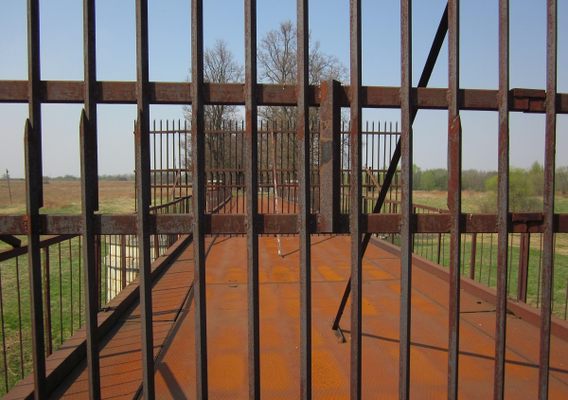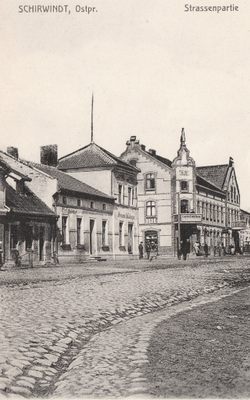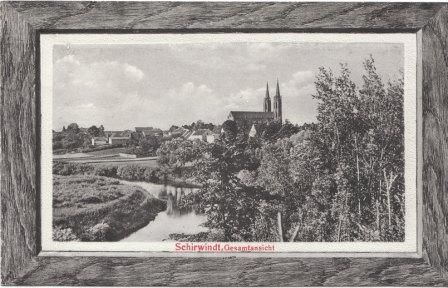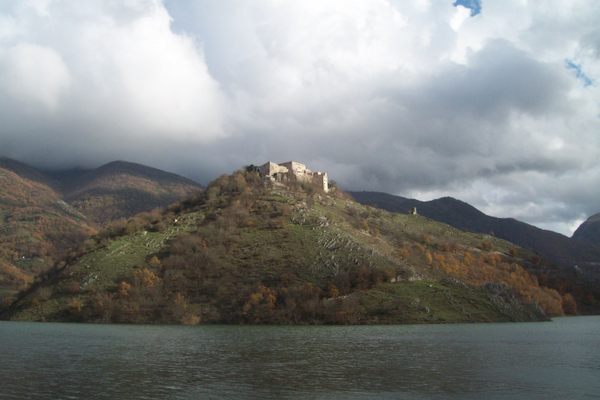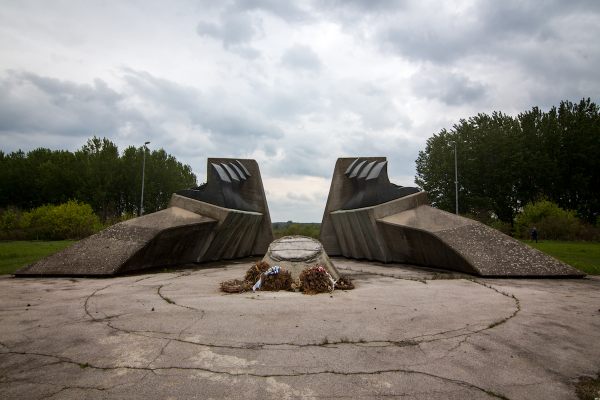About
After the catastrophes of World War II, European cities that had been leveled by bombs began to rebuild. All but one: the German city of Schirwindt.
Today you won’t find this town on any map; there won’t be any road signs leading to it. However, if you wander to the neighboring town of Kudirkos Naumiestis in Lithuania, most every inhabitant will point to a disused bridge over the Šešupė river, on the other side of which is a meadow of large bushes and trees. It's hard to believe that less than century ago this meadow was a thriving city.
Schirwindt was a border city in Prussia-Germany—the state border between Germany and Russia was at the bridge over the Šešupė. Its main business was border trade with Kudirkos Naumiestis. Germans went to Kudirkos Naumiestis to trade geese, horses, and cows for smoked meat. Lithuanians went to Schirwindt for western clothes and shoes. The two towns were also engaged in secret spirit smuggling, as the price of alcohol between the two nations differed wildly.
Until the beginning of World War II about 1,500 people called Schirwindt home. The town had red brick houses and cobbled streets. Just on the outskirts of the city stood the tallest windmill in East Prussia. There were several churches and a railway station. So what happened to this city?
Schirwindt's end came in October of 1944. The first Russian Red Army missiles in Nazi Germany fell exactly on the town, as it was the furthest east Nazi outpost. (The missiles are currently displayed in one of the Saint Petersburg museums.) The city was completely destroyed, and the residents who survived the bombing fled.
After the war, East Prussia was incorporated into Russia as Kaliningrad Oblast. The fields where Schirwindt once stood were cleared, renamed Kutuzovo, and used for army practices. Since then it has been abandoned and no one lives in the region. Today only a German soldiers’ cemetery and the old bridge that connected Schirwindt to Kudirkos Naumiestis remain.
Kudirkos Naumiestis does its best to eulogize its lost sister city. "Schirwindt Path" leads from Kudirkos Naumiestis's main church to the defunct bridge. In 2011 a museum dedicated to Schirwindt opened in Kudirkos Naumiestis, named "Schirwindter Stube" ("Schirwindt Room"). Grain by grain the curators collected everything that was left of the city. Here you can touch bricks from Immanuel church, read original letters sent to and from Schirwindt, and see everyday objects from the life of an extinct city.
Related Tags
Know Before You Go
It is best to visit the museum first. The guides and owners of museum speak German, Russian and Lithuanian. Here you will also be shown there the lost city of Schirwindt stood. You must call in advance (+370 681 47265 or +370 345 57451). If you would want to see what is left from the city by yourself, the coordinates are 54°46'31.2"N 22°51'21.7"E.
Community Contributors
Added By
Published
January 17, 2017
Sources
- http://www.robkruijt.net/Schirwindt/haupt.htm
- http://www.deutsche-schutzgebiete.de/schirwindt.htm
- http://schirwindt.weebly.com/schirwindt-ir-lietuvos-ryscaroniai.html
- http://suduvis.lt/2014/11/06/sirvintos-kampelis/
- https://ru.wikipedia.org/wiki/%D0%9A%D1%83%D1%82%D1%83%D0%B7%D0%BE%D0%B2%D0%BE_(%D0%9A%D1%80%D0%B0%D1%81%D0%BD%D0%BE%D0%B7%D0%BD%D0%B0%D0%BC%D0%B5%D0%BD%D1%81%D0%BA%D0%B8%D0%B9_%D0%B3%D0%BE%D1%80%D0%BE%D0%B4%D1%81%D0%BA%D0%BE%D0%B9_%D0%BE%D0%BA%D1%80%D1%83%D0%B3)
- http://www.bildarchiv-ostpreussen.de/suche/index.html.en?searchtype=town&town=59923#!start=1
- https://en.wikipedia.org/wiki/Kutuzovo,_Krasnoznamensky_District,_Kaliningrad_Oblast


